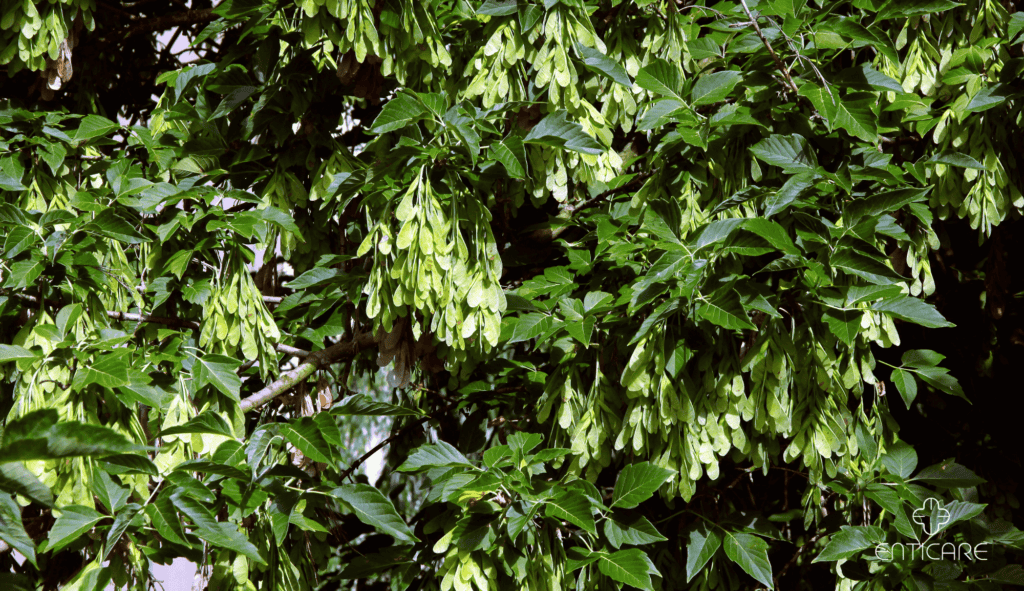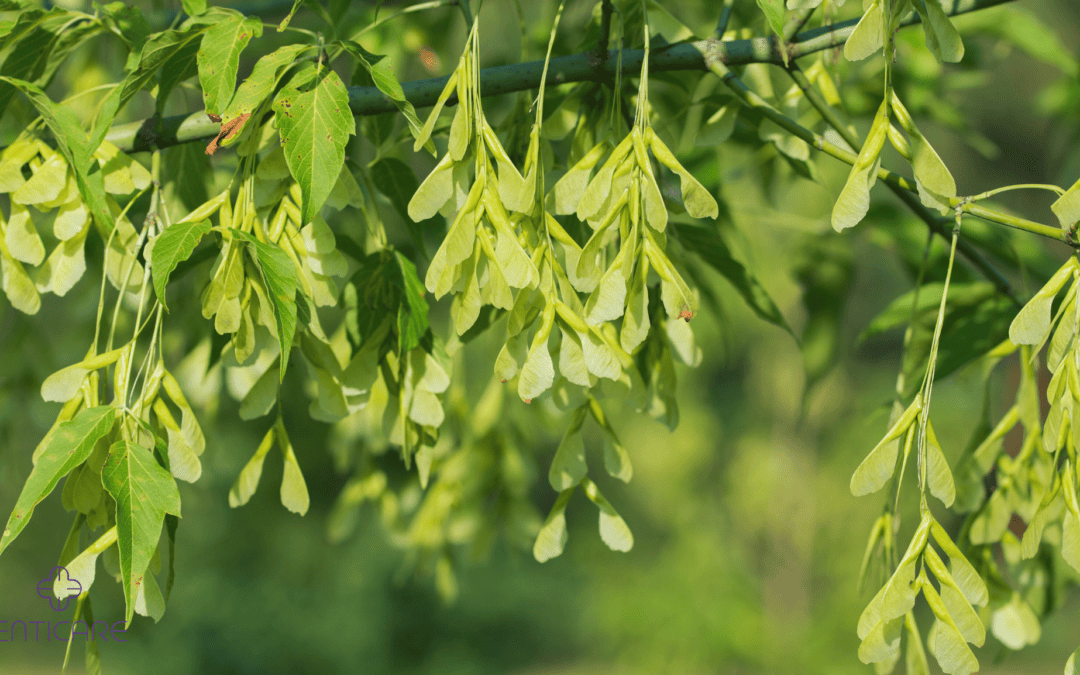The Box Elder, a seemingly innocuous maple tree with beautiful foliage, can pose a hidden threat to some individuals. Its wind-borne pollen triggers Box Elder allergies, causing a range of uncomfortable and potentially severe reactions in susceptible people.
Box Elders, also known as Acer negundo, are widely distributed across North America, particularly in the Midwest and Eastern regions. Originating from the Aceraceae family, Boxelder allergies revolve around the Boxelder tree (Acer negundo), a common yet underestimated contributor to seasonal allergic reactions. While often admired for their aesthetic value, their prolific pollen production during spring and early summer can trigger allergic reactions in sensitive individuals. Are you ready to explore the origins and delve into the nuanced facts about Boxelder allergies in North America?
Origin and Characteristics
Box Elders are deciduous trees native to North America. They can reach heights of 60 to 100 feet and are readily identified by their compound leaves with five pointed leaflets. Their wind-pollinated flowers appear in clusters and are responsible for releasing the allergenic pollen that triggers reactions in some individuals.

Exploring the Causes and Risk Factors
Box Elder allergies are primarily caused by exposure to airborne pollen released by the trees during late April and early May.
Several factors can increase the risk of developing Box Elder allergies:
Family history of allergies
Individuals with a family history of allergies, particularly to other pollens, are at higher risk.
Existing allergies
People with allergies to other wind-pollinated plants, such as ragweed or birch, might experience cross-reactivity due to similar protein structures in the pollen.
Environmental factors
Living in areas with high Box Elder populations or spending extended periods outdoors during peak pollen season increases the risk of exposure and potential reactions.
Discovering the Symptoms
Box Elder allergies can manifest in various ways, often mimicking symptoms of other allergies. Here are some common signs to watch out for:
Hay fever
This includes symptoms like runny nose, sneezing, itchy and watery eyes, and congestion.
Skin reactions
Hives, rashes, or eczema can occur in some individuals.
Respiratory issues
In severe cases, individuals might experience wheezing, coughing, or difficulty breathing.
Managing Box Elder Allergies
If you suspect Box Elder allergies, consulting a healthcare professional is crucial for proper diagnosis and personalized management strategies. Here are some general tips for effective management:
Minimize exposure
During peak pollen season, stay indoors during high pollen count hours, keep windows closed, and use air purifiers at home.
Medication
Antihistamines and nasal corticosteroids, as prescribed by your doctor, can help alleviate allergy symptoms.
Immunotherapy (allergy shots)
In certain cases, allergy shots might be recommended by your doctor to desensitize your immune system to Box Elder pollen over time.
Research on Boxelder allergies is ongoing, aiming to gain a deeper understanding of their prevalence, risk factors, and potential treatment options for improved allergy management.
By understanding these facts, individuals in North America can be more aware of Boxelder allergies, facilitate accurate diagnosis, and take necessary precautions to manage the condition effectively. Explore your treatment options with Enticare. Call us at 480-214-9000!

